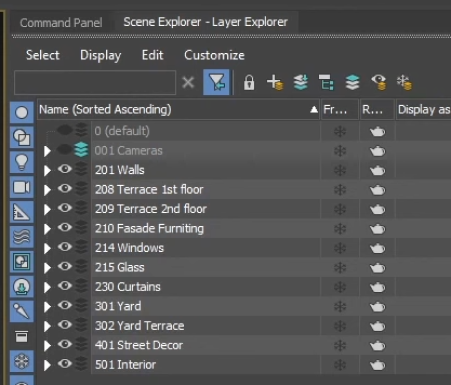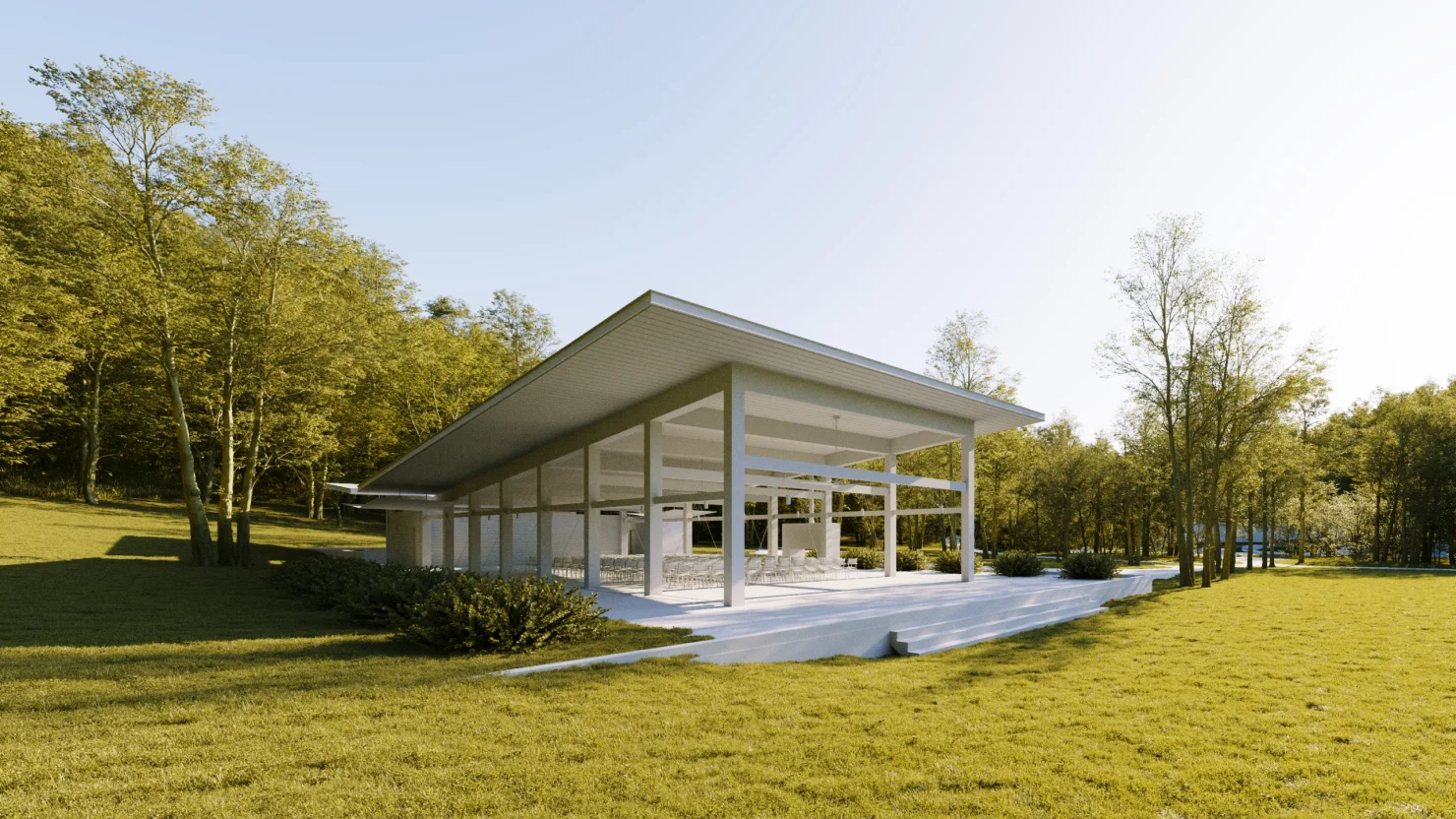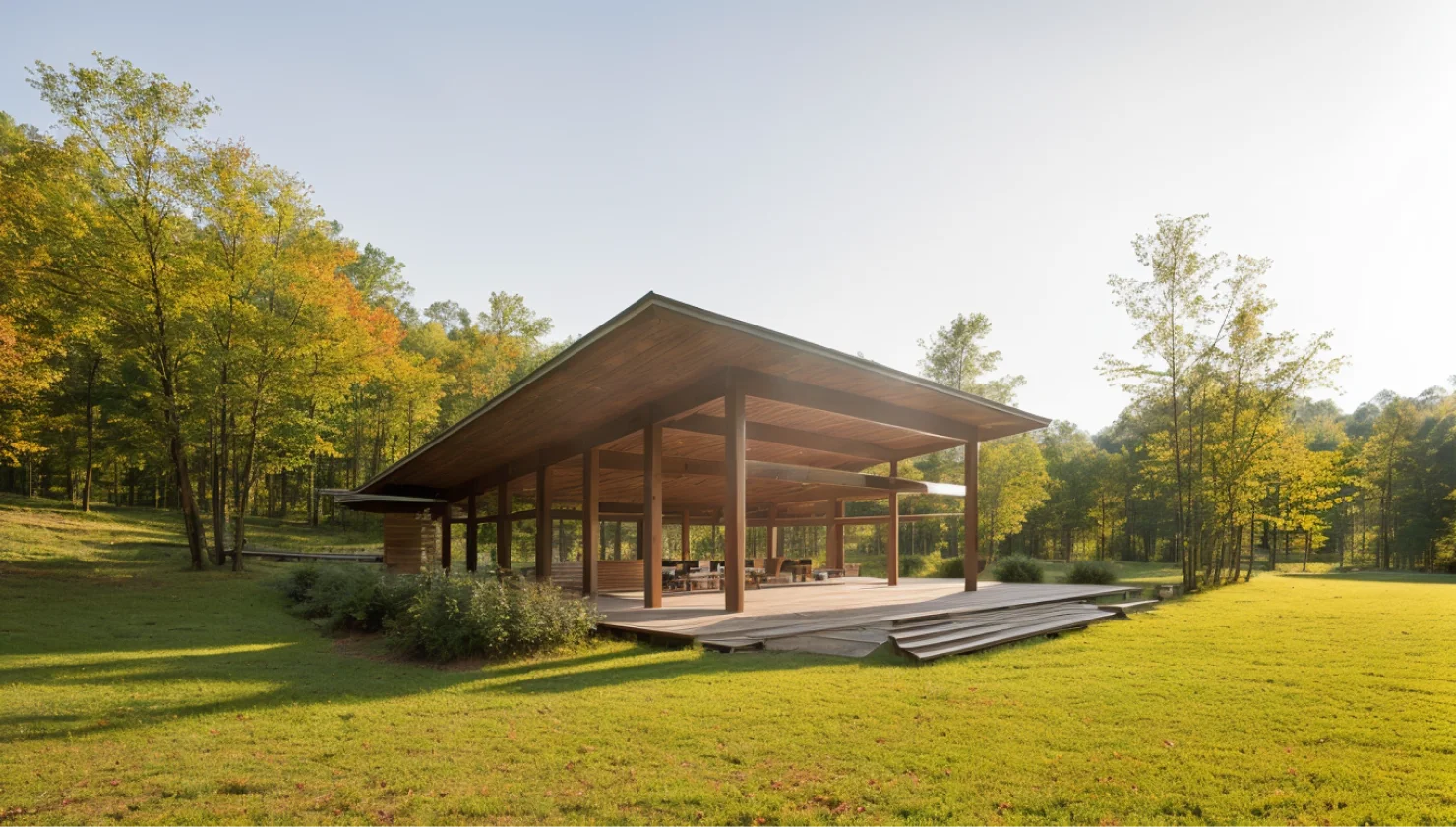ROLES AND RESPONSIBILITIES ON THE PROJECT
Modeler’s Responsibilities
Interior:
- If there is a model from the customer – open and optimize it
- Model floor walls and ceiling with real thicknessм
- Choose from libraries or buys models needed for the project, we cover these costs
- Choose or model high detailed technique such as windows, equipment, lamps etc
- Creates custom furniture (only if it is impossible to borrow libraries or buy)
- Adds decor only that is in the customer’s technical specifications
- Mapping. Check mapping on ready models or unwrap custom models.
- Remove all textures, shaders, light and file settings
- Remove all textures, shaders, light and file settings, merge scene in to new clear max file (Scene optimization)
- Send printscreen of all approximate camera positions to conceptboard of the project
- Save and send files with proper names in proper project folder
Exterior:
- If there is a model from the customer – open and optimize it
- At the end of the work, the model should be ready for chamfer with minimal detalization
- Model or remodel main building, roads, sidewalks, terrain\yards
- Model or remodel environment which is necessary for frames
- Choose or model hidetailed technique such as windows, equipment, lamps etc
- Mapping. Check mapping on ready models or unwrap custom models.
- Place plants according the master plan form THIS library
- We understand that total modeling or remodeling could be long and heavy. Depending on the situation modeler have to optimize scene according the frames and model only objects visible in the frames.
- Remove all textures, shaders, light and file settings, merge scene in to new clear max file (Scene optimization)
- Send printscreen of all approximate camera positions to conceptboard of the project
- Save and send files with proper names in proper project folder
Software to Use:
- 3ds max 2024
- Corona 11
- Forest Pack
- Floor Generator + Multitexture
- Prune scene
- Cosmos browser
The modeler is not responsible for:
- Textures.
- Shaders.
- Decor not specified in the technical specifications.
Rules for organizing the scene space from the beginning:
- Layers hierarchy
- All models in real dimensions
- Avoid triangles, all geometry should be in quads
- Remove all decor
- Don’t use proxies
- Collapse modifier stack in all models
- All glass in a separate layer. Thickness 4mm
- Windows and pools are detailed
- All wooden boards should be ready for multitexture
- For architecture model environment geometry for plants scattering
- Remove all textures
- Scene at the beginning of the coordinates
- Zero in height – top is the floor of the main building first floor
- Use prune scene. The scene should be clean. Do it after models upload and before sending scene
- Merge all scene to new clear scene without any settings
- File Name (XXXX_Name Of Project_Stage_001)
Layers hierarchy template:
Three points are important:
- Organize scene from the most significant to the unimportant details. So at the beginning there will be technical layers with cameras, drawings, and light sources, and at the end there will be decor, cars, and people.
- Name. The name of the layer must begin with three numbers. Where the first digit is the general number of the group. The second two are the ordinal number of the layer in this group.
- Layers need to be distributed not according to the logic of modeling but according to the logic of future work. The artist should be able to select all objects of the layer with one click and do something with them, for example, apply one shader.
Approximate Hierarchy Example:
- 100-199 Technical Layers: Cameras, Lights, Limiters, Drawings.
- 200-299 Main Building, Construction
- 300-399 Human-made environment, Roads, Terraces, Parking.
- 400-499 Doors, Windows, Glass
- 500-599 Trees, Plants, Grass
- 600-699 Cars, People

Finalization of work
Modeler should upload screenshots of all scene elements to the project chat and project manager should check and accept the work or send it for remodeling.
Send us those screenshots, please:
- Layers.
- Approximate camera positions.
- All facades.
- Backyards or terrains.
At the end of the work, please send the final version of the model to the project folder on Google Drive.
Useful videos:
Scene optimization
Artist’s Responsibilities
Project:
- Clients brief. At the very beginning of the project we brief the client, writing down goals for the entire project and for each picture, please read the client brief
- File system. We store all files related to the project on Google Drive. Models, textures, Renders, references and other materials carefully sorted by date
- Conceptboard. All discussion of the project, edits and comments are neatly collected on the project board on the conceptboard website.
- Please send your render along with a reference. So that you and the art director can see exactly what you have to do.

- Rules and Lessons. We are talking specifically about this document that you are reading at the moment. Please read it carefully. If you have forgotten any points, re-read it again. If something is not clear or you do not agree with something, write to the project manager.
- In any case, or if you have any doubts, you can ask for advice or ask for help from a project manager.
- The entire work process is divided into simple four stages:
- modification of the model for the frame
- creation of “General Feeling”
- creation of shaders
- rendering and post-processing
Software to Use:
- 3ds max 2024
- Corona 11
- Forest Pack
- Floor Generator + Multitexture
- Prune scene
- Cosmos browser
If you have any issues with software ask your PM
Model \ Scene
- Artists are responsible for beauty. We delegated the tasks of modeling the main geometry to the modeler. But it is the responsibility of the artist to make every frame look beautiful. It is the artist’s task to choose models of decor, plants, people, cars, and their positions in the frame.
- Accept and check the model. The artist must accept the model after the modeler. Check whether all is done with high quality and in accordance with all the rules from the “modeler’s responsibility” block. If the scene is slow, you find any issues, or you need to work on additional parts of the scene, please contact the Project Manager.
- Attach objects of the same type at your discretion.
- Choose and add decoration. The artist can/must add, change, modify, and move decor to get the most beautiful final frames.
- Choose and add plants. The artist can/must add, change, modify, and move plants to get the most beautiful final frames.
- Save the scene with all assets after each approved preview and upload it to Google Drive. Use the plugin “Collect Asset”.
- Continue naming project files with correct names: XXXX_Name Of Project_Stage_001.
Camera position
- In most cases, the client’s brief will provide camera positions, so use them first.
- If no camera positions are provided, use the “Lesson about Rules of Composition” first.
- Offer your own ideas if you think it necessary.
- When showing test renders, make them fast (2-5 minutes).
- For production renders, use a resolution of 1500-2000 pixels or larger and apply a denoiser.
General feeling (GF)
1. General feeling = Composition = position of objects in the frame + light and shadow composition + color composition.
Main goal here is to catch really valuable nice frame. Lesson about general feeling

2. AI generated reference based on GF. Lesson

3. At the end of this stage, please send the final version of the scene with all assets to the project folder on Google Drive.
4. Showing test renders make them fast (2-5 minutes) production renders in 1500-2000 pixels bigger size + Denoiser.
Shaders
- Do not use ready shaders. Save textures from difficult models but build your own color matching.
- Create shaders from the biggest in the frame to the smallest.
- Add reflection to all your shaders.
- Use reflection maps before diffuse maps.
- Bump kills most shaders.
- At the end of this stage, please send the final version of the scene with all assets to the project folder on Google Drive.
- This and following stages render with masks:
CESSENTIAL_DirectCESSENTIAL_ReflectCESSENTIAL_RefractCESSENTIAL_Translucency
СGeometry_NormalsDotProduct
СGeometry_NormalsShading
СMasking_Cryptomatte
СMasking_ID
СShading_RawComponent
СMasking_WireColor
Render Settings and Time Planning:
- Huge part of project time is rendering time. Only you know your plans, conditions, and PC specs. Please plan render time for all images you have to render in preview and final quality.
- Final render default quality: 5000 pixels on the longer side, 4% noise, denoiser, masks.
- Postproduction + AI + People replacement is on your side, so plan time for this. Allocate at least 1 hour per frame.
- Over sharpness kills.
Finalization of work
- All materials should be saved in one folder of the project.
- No missed textures. Such errors must be corrected as they affect the speed of work.
- Save and send files with proper names in the proper project folder.
- At the end of the project, please send the final version of the scene with all assets to the project folder on Google Drive.
Useful videos:
Contacts
-
LocationUS, New York NY 10016, 347 5th Ave Suite 1402-374 Portugal, Lisbon, Cidade de cardiff 1, 5D
-
E-mailinfo@fortes.vision
-
Phone+1 (929) 547 74 73
